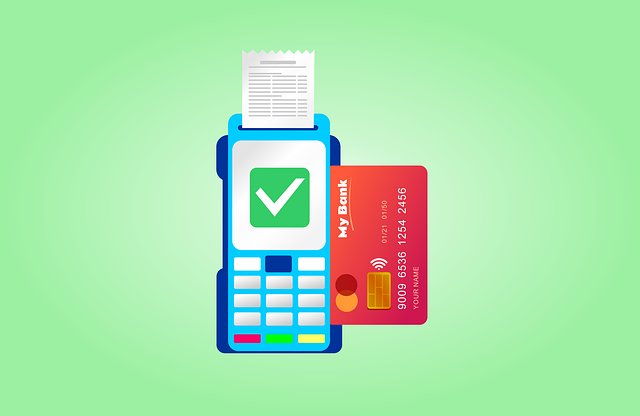Invoice financing empowers small businesses with quick access to capital by leveraging outstanding invoices. Compared to traditional loans, it offers reduced interest rates and no impact on credit scores. However, there are higher fees, potential customer reactions, and the risk of late payments. The application process is straightforward through online platforms provided by reputable invoice financing providers. To maximize benefits, businesses should carefully evaluate their financial situation, choose reputable providers, and compare terms to find the best fit for improved cash flow and growth.
“Small businesses often face cash flow challenges, but invoice financing offers a dynamic solution to unlock growth potential. This article delves into the world of invoice financing, revealing its benefits as an alternative funding option. We’ll explore how it differs from traditional loans, provide a step-by-step guide to understanding the process, and analyze its advantages and drawbacks.
Learn about navigating the application process and choosing providers to ensure optimal support for your business’s expansion plans.”
- Invoice Financing Benefits for Small Businesses: Unlocking Cash Flow Potential
- Understanding the Dynamics: Invoice Financing vs Traditional Loans
- Demystifying Invoice Financing: A Step-by-Step Guide
- Weighing the Pros and Cons: Advantages and Drawbacks of Invoice Financing
- Navigating Application Process & Choosing Providers for Optimal Support
Invoice Financing Benefits for Small Businesses: Unlocking Cash Flow Potential

Invoice financing benefits can be a game-changer for small businesses looking to expand. Unlike traditional loans, which often require collateral and stringent credit checks, invoice financing is a flexible funding option that leverages your existing customer base. It works by selling your outstanding invoices (i.e., debts owed by customers) to a third-party provider at a discount. This immediate cash injection can help small businesses meet immediate financial needs, such as funding inventory purchases or covering operational expenses, without the long wait times associated with traditional loan applications.
When considering invoice financing vs. loans, small business owners should weigh the pros and cons. On one hand, it provides quick access to capital, reduced interest rates compared to short-term loans, and no impact on business credit scores. However, there are also cons to consider, such as higher fees due to the short-term nature of the financing and potential customer pushback if they become aware of the arrangement. Applying for invoice financing is typically straightforward through reputable providers who offer online platforms, making it an accessible option for businesses looking to unlock their cash flow potential.
Understanding the Dynamics: Invoice Financing vs Traditional Loans

Invoice financing offers small businesses a flexible alternative to traditional loans when seeking expansion capital. Understanding the dynamics between invoice financing and conventional loans is crucial for business owners considering their funding options. Traditional loans often require collateral, strict repayment terms, and extensive documentation, making them less accessible for startups or companies with limited financial history. In contrast, invoice financing leverages outstanding invoices as collateral, allowing businesses to access funds quickly without the stringent requirements of traditional banking.
How invoice financing works is straightforward: Businesses sell their invoices (accounts receivable) to a provider at a discount, receiving immediate cash flow. The provider then collects the full amount from the customer, minus their fee. This method provides several benefits, such as improved cash flow and reduced financial strain. However, it also has pros and cons; for instance, late payments can impact cash flow, and interest rates might be higher than traditional loans. When exploring invoice financing, businesses should carefully consider their financial situation, repayment capacity, and compare various providers to find the best fit among reputable invoice financing services.
Demystifying Invoice Financing: A Step-by-Step Guide

Invoice financing can seem like a complex financial strategy, but demystifying it can unlock significant benefits for small businesses looking to expand. This alternative funding method allows businesses to access immediate cash flow by selling their outstanding invoices (or accounts receivable) at a discount. It’s not a loan; instead, the financier buys these invoices and takes on the risk of ensuring the debtees pay.
Understanding how it works is the first step. When applying for invoice financing, business owners provide details about their invoices—such as customer information, amount due, and payment terms. The provider then assesses the creditworthiness of both the business and its customers, determining the value they can offer based on these invoices. After approval, the financier advances a percentage (typically 70-90%) of the total invoice value, less any fees or discounts. Once the customer pays the invoice, the financier reimburses the business for the advanced funds plus agreed-upon interest or fees. This process offers several pros, including faster access to cash compared to traditional loans, no collateral required, and the ability to finance a portion of your sales, not just a fixed amount. However, it also comes with cons, such as higher financing costs and potential impact on customer relationships if managed incorrectly by the financier. Choosing the right invoice financing provider is crucial; look for reputable companies with transparent terms and competitive rates to ensure the best experience.
Weighing the Pros and Cons: Advantages and Drawbacks of Invoice Financing

Invoice financing can be a powerful tool for small businesses seeking to expand their operations, but it’s crucial to weigh its advantages and drawbacks before making a decision. One of the key benefits of invoice financing is that it provides access to immediate cash flow, allowing business owners to tap into outstanding invoices and utilize that capital for growth initiatives. This alternative funding method is particularly appealing for companies with strong billing histories and consistent revenue streams, as it offers a flexible repayment structure tied to customers’ payment schedules.
However, there are also potential drawbacks to consider. Unlike traditional loans, invoice financing involves selling pending invoices at a discount, which can impact cash flow margins. Additionally, applying for invoice financing may require significant documentation and time commitment from the business owner. The cost of funding, including fees and interest rates, should be carefully evaluated against other borrowing options available through banks or invoice financing providers. Understanding how invoice financing works and comparing it to conventional loans is essential in making an informed choice that aligns with the small business’s financial goals and sustainability.
Navigating Application Process & Choosing Providers for Optimal Support

Navigating the application process for invoice financing can seem daunting at first, but with a clear understanding of how it works and by choosing the right providers, small businesses can access significant benefits. Invoice financing offers an alternative to traditional loans, focusing on the value of outstanding invoices rather than overall business assets. This flexible funding option is particularly attractive for growing enterprises as it provides quick access to cash flow without the need for collateral.
When selecting invoice financing providers, businesses should consider both the pros and cons. Pros include faster turnaround times compared to bank loans, improved cash flow management, and no long-term commitment. Cons may include higher interest rates and fees, and the potential for negative impact on client relationships if not managed discreetly. To optimize support, carefully evaluate provider offerings based on factors like funding speed, customer service, transparency in pricing, and industry expertise to align with your specific business needs.






